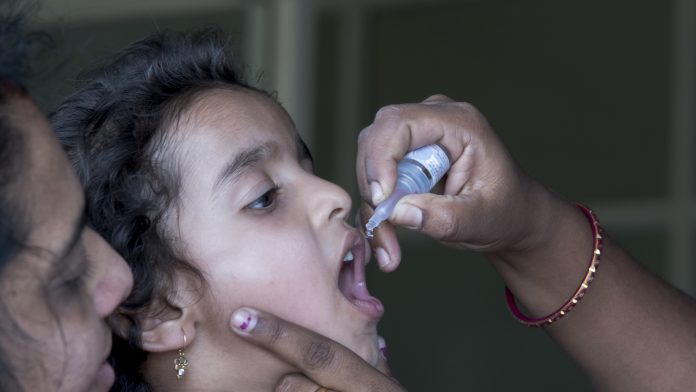
The current approach to measles vaccination is unlikely to eliminate the disease, according to a new study from the University of Georgia.
The research, which was published in The Lancet Global Health, explores the likelihood of eliminating measles using the vaccination strategies in place in the 93 countries with the highest disease burden.
Measles is an acute viral respiratory illness. It is often accompanied by high fever, malaise, cough, and conjunctivitis. These symptoms are usually followed by a rash that appears around 14 days after the individual is exposed to the virus.
Measles vaccination strategy needs reconsidering
The number of measles cases worldwide has been reduced significantly in recent years; however, gaps remain between current levels of transmission and disease elimination.
“Measles is one of the most contagious respiratory infections out there, and it moves quickly, so it’s hard to control,” said lead author Amy Winter, Assistant Professor of Epidemiology and Biostatistics at UGA’s College of Public Health.
The reproduction number (R0) for measles is 18. This number represents the number of people one infected person is likely to transmit measles to in a fully susceptible population. For the comparison, the R0 number for the original strain of COVID-19 is estimated to be around three.
In 2017, the World Health Organization (WHO) Director General commissioned a report on the feasibility of measles eradication. One of the key elements of the report was to evaluate the theoretical feasibility of the total eradication of the disease using different approaches to measles vaccination.
The researchers examined four national disease transmission models and one sub-national model. The modelling groups projected the annual case rates for measles under two measles vaccination scenarios.
Both scenarios used the two predominant approaches of routine measles vaccination as part of childhood immunisation schedules. The first approach was the “business as usual” measles vaccination scenario, which continues coverage and campaigns into the future. The second was the “intensified investment” approach of optimally improved vaccination coverage over time.
The second measles vaccination scenario includes cessation criteria. This means there would be a stopping point for the campaign when the vaccination was no longer deemed necessary as a large enough percentage of the population has been inoculated.
“The current strategy that we use, which is focused on improving routine measles vaccination coverage and supplementing it with nationwide vaccination campaigns until routine vaccination is high enough, that alone is not going to be sufficient to reach measles elimination. We need novel approaches,” said Winter.
Vaccine equity is key to eradication
The researchers evaluated new two strategies that could help move a country to eliminate measles faster and reduce the chance of outbreaks. The first approach was to prioritise reaching children who are not receiving the vaccine. The second approach was to improve vaccine coverage equity by focusing routine and supplemental measles vaccination on sub-regions with the lowest vaccination coverage first.
“A world that is permanently free of measles would be an incredible achievement for humanity. Our work suggests that to reach this goal, we need to make vaccine coverage much more equal,” said co-author Mark Jit, professor of vaccine epidemiology at the London School of Hygiene & Tropical Medicine.
After considering the effectiveness of the existing approaches the researchers presented their final strategy. They suggested a reconsideration of cessation criteria. Currently, most countries stop supplementing routine vaccines once they reach elimination status, but the study suggests that outbreaks are still likely if countries rely on routine vaccines alone.
“We have a globally connected world, so there’s this constant pressure of importations of the viruses in places where it’s already eliminated. That’s why keeping vaccination coverage high and continuing to improve surveillance for these diseases is important,” concluded Winter.










